-
作者通过网络药理学和体外实验,对青蒿治疗肾阴虚型糖皮质激素性骨质疏松(GIOP)的潜在作用靶点及相关信号通路进行预测和初步验证。研究结果表明, 青蒿治疗肾阴虚型GIOP具有多靶点-多通路的特点,可以通过多条途径促进成骨细胞的增殖、分化,其中PI3K/AKT信号通路是一条重要的通路,青蒿治疗肾阴虚型骨质疏松可能与其能够促进PI3K/AKT信号通路,促进AKT的磷酸化有关。
-
骨质疏松症(osteoporosis, OP)是一种以骨密度(bone mineral density, BMD) 降低、骨量丢失、骨微结构破坏为主要特点的全身代谢性骨病,以骨脆性增加、易发生骨折为主要特征[1]。随着老龄化的加剧,OP的发生率越来越高,在我国50岁以上的人群中,OP的发生率为19.2%,其中女性为32.1%,男性为6.0%[2]。OP可分为原发性OP和继发性OP,在继发性OP中,糖皮质激素性OP(glucocorticoid-induced osteoporosis, GIOP)的发生率排在第一位[3],目前骨质疏松症(OP)是一种以骨密度(BMD) 降低、骨量丢失、骨微结构破坏为主要特点的全身代谢性骨病,以骨脆性增加、易发生骨折为主要特征[1]。随着老龄化的加剧,OP的发生率越来越高,在我国50岁以上的人群中,OP的发生率为19.2%,其中女性为32.1%,男性为6.0%[2]。OP可分为原发性OP和继发性OP,在继发性OP中,GIOP的发生率排在第一位[3],GIOP治疗上西医使用的药物有钙制剂、活性维生素 D、双磷酸盐类以及雌激素等,这些药物不仅忽略了糖皮质激素这个罪魁祸首,还有可能产生一系列的副作用[4],寻找安全有效且有针对性的药物显得尤为重要。
中医认为糖皮质激素是“纯阳”之品[5],使用过量易伤阴津;肾主骨,肾虚是导致骨质疏松的关键病机,因此,肾阴虚证是GIOP的一个主要证型,临床研究也证明,肾阴虚证是GIOP患者的一个易患证型[6]。青蒿为菊科蒿属植物黄花蒿植物Artemisia annua L.的干燥地上部分,分布遍及全国,味苦、辛,性寒,归肝、胆经,具有清虚热、除骨蒸的作用[7],对于过量使用糖皮质激素造成的阴虚火旺、烦躁不安,有一定的疗效,临床上也常用青蒿加减处方治疗糖皮质激素使用过度,造成阴虚火旺、虚火上炎的病症[8-9],同时,体内实验发现,青蒿在多种骨丢失模型动物上,可以促进骨组织的再生,提高骨密度[10],青蒿在治疗骨质疏松方面具有广阔的应用前景。然而,目前关于青蒿治疗OP,特别是在GIOP方面的研究尚有限,为此,本研究应用网络药理学和体外实验,结合中医基础理论知识,研究青蒿治疗肾阴虚型GIOP的关键靶点和信号通路,以期明确中药青蒿抗肾阴虚型GIOP的作用及机制,为骨质疏松的临床治疗提供新思路和方法。
-
在GeneCards数据库(https://www.Genecards.org)、OMIM数据库(https://omim.org)和Drugbank数据库(https://go.drugbank.com)中,以“glucocorticoid induced osteoporosis”作为关键词进行检索,获得GIOP的靶点基因,去除两个数据库的重复结果,获得GIOP疾病靶点基因。
-
根据全国中西医结合虚证与老年病研究专业委员会[11]1986年对虚证辩证标准的修订,阴虚证诊断标准:主证:①五心烦热(palms and soles);②咽燥口干(dry throat and thirst );③舌红或少苔、无苔(red tongue or less fur or without fur);④脉细数(thin and rapid pulse)。次证:①午后升火(tidal fever);②便结而尿短赤(constipation and scanty dark urine);③盗汗(night sweating)。诊断条件:具备主证3项,次证1项。在GeneCards数据库中,对各症状关键词进行检索,筛选出4个主证检索结果中至少出现3次的靶点,与次证检索结果交叉分析后得到阴虚靶点。肾虚证诊断标准为:①腰脊酸痛(soreness and weakness of waist);②胫酸膝软或足跟痛(soreness and weakness of knees or heel pain);③耳鸣或耳聋(tinnitus or deaf);④发脱或齿摇(alopecia or toothmobilit)y;⑤尿后有余沥或失禁(urinary incontinence or poor urination);⑥性功能减退、不育、不孕(sexual dysfunction and infertility or sterility)。诊断条件:具备3项。在GeneCards数据库中,对各症状关键词进行检索,筛选出至少出现3次的靶点为肾虚靶点。将阴虚靶点与肾虚靶点交叉分析后获得肾阴虚靶点。将GIOP疾病靶点与肾阴虚靶点交叉分析后获得肾阴虚型GIOP靶点。
-
在中药系统药理学数据库与分析平台(TCMSP:http://tcmspw.com/tcmsp.php)上,以Herb:青蒿、OB≥30%、DL≥0.18为条件进行检索,确定青蒿的活性成分。
-
利用TCMSP的靶点预测模型,进一步预测青蒿活性成分的相关靶点,通过UniProt数据库(http://www.Uniprot.org/)对预测靶点添加基因名。最后利用微生信在线软件(http://www.bioinformatics.com.cn/)将肾阴虚型GIOP靶点基因与青蒿靶点基因进行交集分析,并绘制出韦恩图。
-
将“青蒿-肾阴虚型GIOP”共同靶点基因数据导入String在线软件(https://string-db.org /),选择种属为“Homo sapiens”,设置最小互作得分为0.4,构建出PPI网络,将数据导入Cytoscape软件中进行可视化分析,并利用CytoNCA插件进行拓扑分析,以度中心度(DC)和介度中心度(BC)均大于上四分位数的靶点作为核心靶点,进一步分析。
-
为进一步阐述青蒿对肾阴虚型GIOP的作用机制,将“青蒿-肾阴虚型GIOP”共同靶点基因数据导入metascape数据库(https://metascape.org/gp/index.html)进行GO功能富集分析和KEGG功能富集分析,并通过微生信在线软件绘制相关柱状图和气泡图。
-
青蒿购于河北安国市场,经海军军医大学药学系生药学教研室辛海量副教授鉴定,密封存放于干燥阴凉处。称取青蒿粉末1g,加入60%乙醇50 ml,室温冷浸7 d,过滤得滤液,55 ℃旋蒸浓缩后,55 ℃烘干备用[12-13]。
其他试剂及生产厂家:地塞米松(大连美仑);胎牛血清(Gibco,美国);DMEM培养基等细胞培养试剂(天津灏洋);碱性磷酸酶(ALP)试剂盒(南京建成);BCA蛋白检测试剂盒、MTT(上海碧云天生物技术有限公司);PI3K、AKT、p-AKT、GADPH抗体(CST公司)。
-
以二次消化法从新生大鼠颅骨盖中分离获得原代成骨细胞[14]。
-
以含10%胎牛血清和1%青/链霉素的DMEM培养基培养成骨细胞,置于37 ℃、5%CO2培养箱中培养,待细胞铺满80%~90%时,用0.25%胰蛋白酶消化传代培养。
-
取3-8代的成骨细胞计算其数目,配制成细胞浓度为1×104 个/ml细胞悬液接种于96孔板。24 h后分别更换为含药培养液(DEX: 10 μmol/L;AE: 100、50、 25 μg/ml)。给药48 h后采用MTT法检测成骨细胞的增殖情况。
取3-8代的成骨细胞计算其数目,配制成细胞浓度为5×104 个/ml细胞悬液接种于24孔板。24 h后分别更换为含药培养液(给药浓度同上)。培养过程中每3 d更换1次含药培养液。第8d裂解细胞,收集细胞裂解液,于4 ℃、13800×g 离心5 min。用对硝基苯磷酸二钠法测定细胞ALP活性。
-
将3-8代的成骨细胞裂解,提取细胞总蛋白,根据BCA试剂盒进行蛋白定量。采用Western-blot技术对PI3K、AKT和p-AKT水平进行检测。
-
实验结果以“均值±标准差”(
$ \bar x$ ±s)表示。采用SPSS 22.0软件进行数据分析,选用单因素方差分析(One-Way ANOVA)进行组间变量的比较分析。 -
通过Genecards数据库共检索到GIOP相关靶点基因1741个,通过OMIM数据库共检索到GIOP相关靶点基因311个,通过Drugbank数据库共检索到GIOP相关靶点基因30个,将3个数据库检索结果合并后去除重复基因后,最终获得2039个。通过Genecards数据库检索获得阴虚靶点基因876个,肾虚靶点基因4603个,交叉分析后获得肾阴虚靶点基因836个。将肾阴虚靶点基因和GIOP靶点基因交叉分析后获得522个肾阴虚型GIOP靶点基因(图1)。
-
通过TCMSP平台共检索到青蒿中OB≥30%,DL≥0.18的活性成分22个,见表1。
分子名称 生物利用度(%) 药物相似度(DL) 新西兰牡荆苷_qt 59.85 0.21 醋酸酯 58.02 0.52 脱氧青蒿素 54.47 0.26 青蒿烯 54.36 0.31 万寿菊素 53.11 0.34 牡荆黄素_qt 52.18 0.21 泽兰黄醇素 50.8 0.41 双氢青蒿素 50.75 0.3 青蒿素 49.88 0.31 异鼠李素 49.6 0.31 青蒿亭 49.55 0.48 茵陈黄酮 48.96 0.41 槲皮素 46. 43 0.28 维采宁-2_qt 45.84 0.21 豆甾醇 43.83 0.76 线蓟素 43. 46 0.34 六氟磷酸钠 42.6 0.37 山奈酚 41.88 0.24 谷甾醇 36.91 0.75 木犀草素 36.16 0.25 怪柳黄素 32.86 0.31 玄参黄酮 30.35 0.3 -
通过TCMSP和UniProt数据库获得214个青蒿活性成分靶点基因。将其与肾阴虚型GIOP疾病靶点基因交叉分析(图1),“青蒿-肾阴虚型GIOP”交集靶点基因共有98个。
-
运用String在线软件构建出“青蒿-肾阴虚型GIOP”共同靶点PPI网络(图2),共有98个节点,1935条相互关系,见图2。利用CytoNCA插件计算网络节点的DC,BC上四分位数为59、101.49248,故以DC≥59、BC≥101.49248为筛选条件,筛选青蒿治疗肾阴虚型GIOP的核心靶点,共得到17个核心靶点,如表2。
靶点信息 简称 度中心度
(DC)介度中心度
(BC)RAC-α丝氨酸/苏氨酸
蛋白激酶AKT1 84 495.8247 肿瘤坏死因子 TNF 83 336.63745 白细胞介素-6 IL6 81 281.4354 细胞肿瘤抗原p53 TP53 79 273.47903 血管内皮生长因子A VEGFA 78 200.2001 白细胞介素-1β IL1B 76 199.86818 基质金属蛋白酶-9 MMP9 73 146.52397 转录因子AP-1 JUN 71 167.16982 前列腺素G/H合成酶-2 PTGS2 71 140.30101 半胱氨酸蛋白酶-3 CASP3 71 120.33017 表皮生长因子受体 EGFR 68 294.5016 表皮生长因子 EGF 67 107.6285 白细胞介素-8 CXCL8 67 127.67476 雌激素受体 ESR1 65 251.7144 C-C基序趋化因子配体 CCL2 65 101.49248 过氧化物酶体增殖物
激活受体γPPARG 63 118.61439 血红素氧合酶-1 HMOX1 59 156.89531 -
GO富集分析获得5612个细胞生物学过程,其中BP分析获得4649个条目,MF分析获得585个条目,CC分析获得378个条目,根据富集的基因数进行降序排列,分别选取前10个条目建立BP、MF、CC三合一柱状图(图3)。生物学过程(BP)主要涉及激素应答、性腺发育、细胞死亡的正向调节等,细胞成分(CC)包括细胞外基质、转录调节复合物、膜筏等,分子功能(MF)包括信号受体调节活性、蛋白结构域特异性结合、激酶结合等。
KEGG富集分析获得225个信号过程,根据富集的基因数进行降序排列,选取前20个条目建立气泡图(图4),KEGG富集分析主要涉及的信号通路有PI3K/AKT信号通路,IL-17信号通路,AGE/RAGE信号通路,MAPK信号通路等,说明青蒿治疗肾阴虚型GIOP可能是从多条信号通路联合发挥作用的,其中PI3K/AKT信号通路上富集的共同靶点最多。
-
DEX损伤成骨细胞后,其增殖能力及ALP活性显著降低。药物治疗后,青蒿提取物可显著促进DEX损伤的成骨细胞的增殖,提高ALP活性,促进DEX损伤的成骨细胞的增殖(图5)。
-
药物处理DEX损伤的成骨细胞48 h后,Western blot结果显示,与空白组比较,模型组p-AKT/AKT比值、PI3K蛋白表达水平明显下降,给予青蒿提取物治疗后,p-AKT/AKT比值、PI3K蛋白表达水平明显提高(图6)。
-
研究发现,PI3K/AKT通路与氧化应激有密切的联系,一方面,过量的活性氧(ROS)可抑制AKT的磷酸化[15],另一方面,磷酸化的AKT也可以通过Nrf2/HO-1通路抑制氧化应激[16]。在OP的治疗药物探索过程中,抗氧化是一条重要的线索,如啤酒花中的黄腐酚,杜仲中的绿原酸,黄连中的小檗碱,其抗骨质疏松的机制均与抗氧化有关[17-19],现代药理研究已经证明青蒿具有抗氧化,抗炎,调节免疫等作用[20-21],但青蒿中化学成分众多,虽然目前多以倍半萜类成分青蒿素含量作为其质量评价标准[22]。然而,除了倍半萜类成分外,青蒿中还存在黄酮类成分、有机酸类成分等等[23],青蒿的抗肾阴虚型GIOP的机制可能与抗氧化有关。研究发现,倍半萜类成分、黄酮类成分、有机酸类成分均存在一定的抗氧化效果[24-27],青蒿的抗肾阴虚型GIOP的机制可能与抗氧化有关。因此,研究青蒿是否在抗OP方面存在作用,青蒿中哪种单体成分在其抗OP的过程中起主要作用值得进一步探究。
本研究以网络药理学为基础,初步筛选出了青蒿抗肾阴虚型GIOP的98个共同靶点,通过拓扑分析,筛选出了17个核心靶点。GO分析和KEGG富集分析发现这些共同靶点参与了多个生物学过程,且参与PI3K/AKT,IL-17,AGE/AGE,MAPK等多个信号通路,其中PI3K/AKT信号通路上富集的共同靶点最多。研究表明,PI3K/AKT信号通路可通过影响成骨细胞的增殖和分化,抑制OP的发生[28]。本研究体外实验亦证实青蒿可以促进DEX损伤的成骨细胞的增殖和分化,激活PI3K/AKT信号通路,促进AKT的磷酸化,验证了网络药理学的预测结果,为后续青蒿抗GIOP研究提供了科学依据。
Mechanism of Artemisia annua L. in GIOP with kidney-yin deficiency based on network pharmacology
doi: 10.12206/j.issn.2097-2024.202204115
- Received Date: 2022-04-27
- Rev Recd Date: 2022-11-01
- Available Online: 2023-11-25
- Publish Date: 2023-11-25
-
Key words:
- Artemisia annua L. /
- kidney-yin deficiency /
- glucocorticoid-induced osteoporosis /
- dexamethasone /
- osteoblast
Abstract:
| Citation: | LAI Liyong, XIA Tianshuang, YUE Xiaoqiang, XIN Hailiang. Mechanism of Artemisia annua L. in GIOP with kidney-yin deficiency based on network pharmacology[J]. Journal of Pharmaceutical Practice and Service, 2023, 41(11): 672-679. doi: 10.12206/j.issn.2097-2024.202204115 |



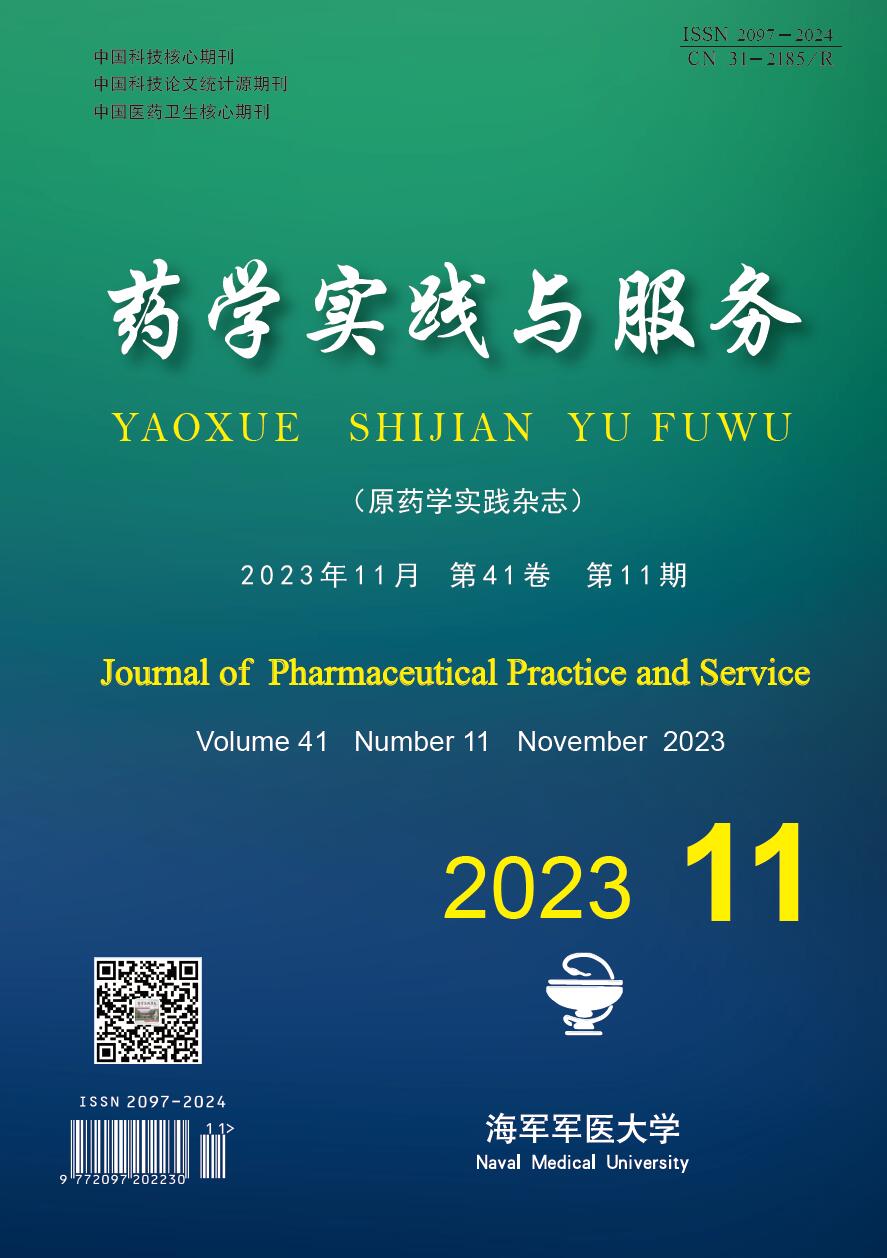



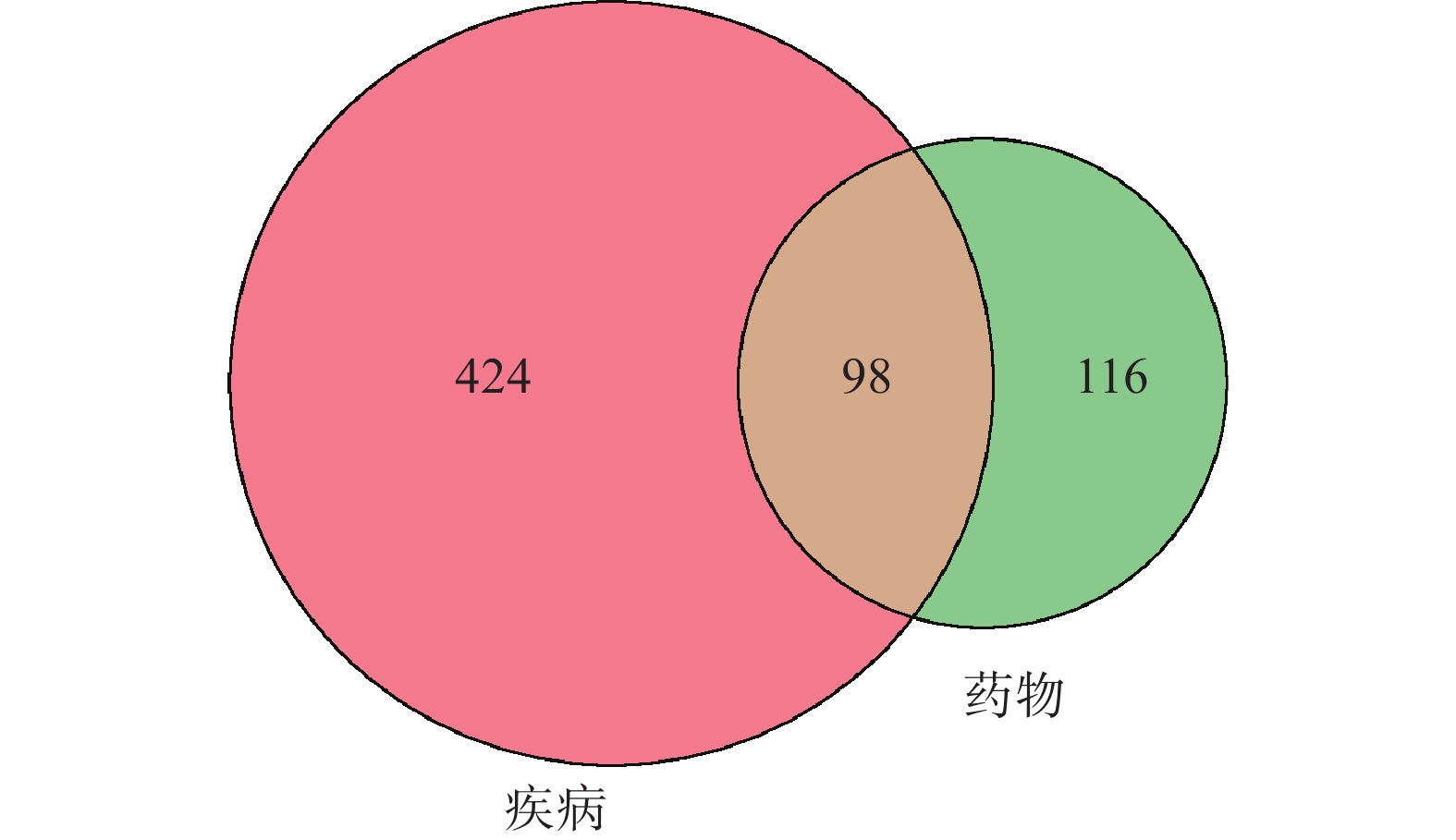



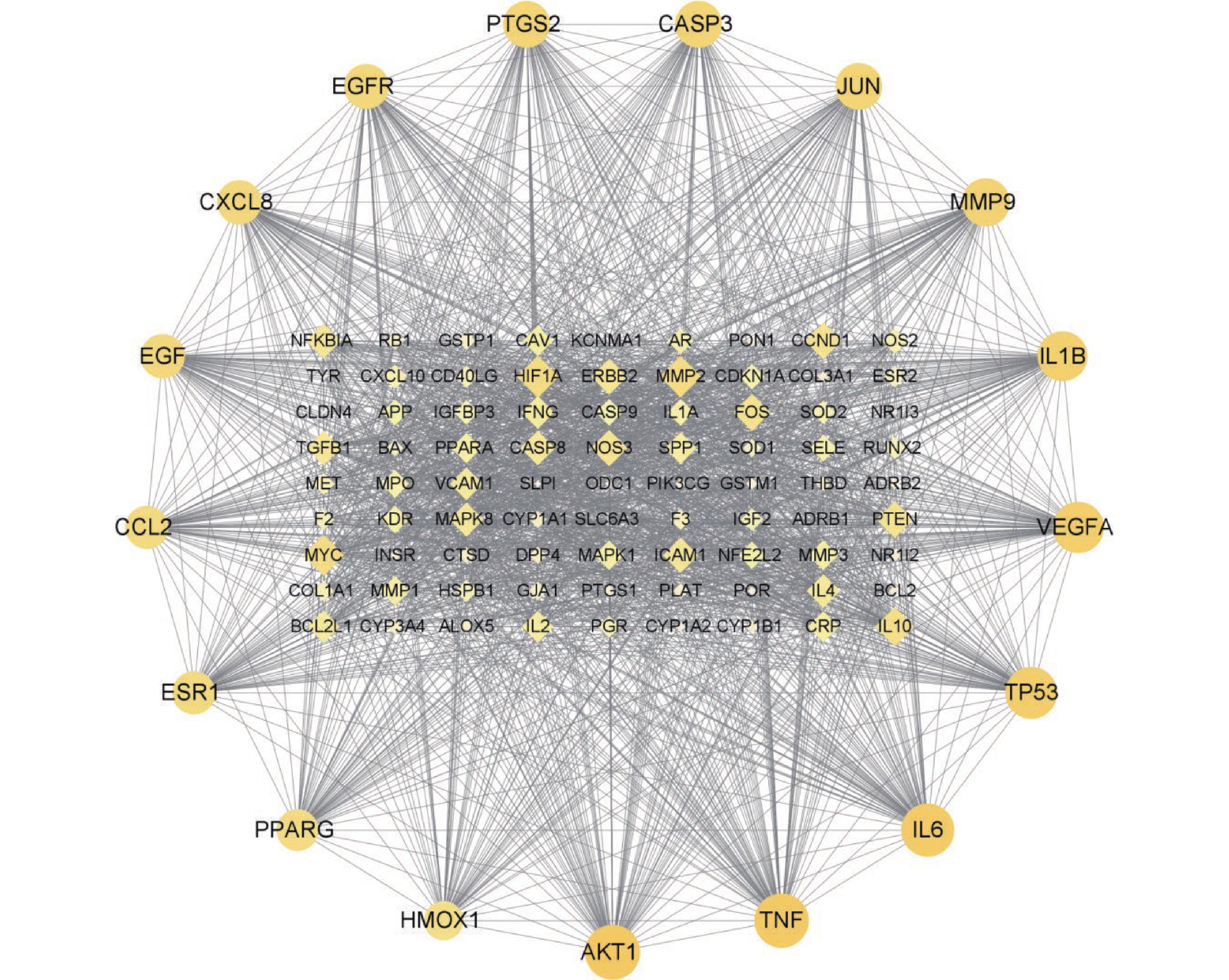

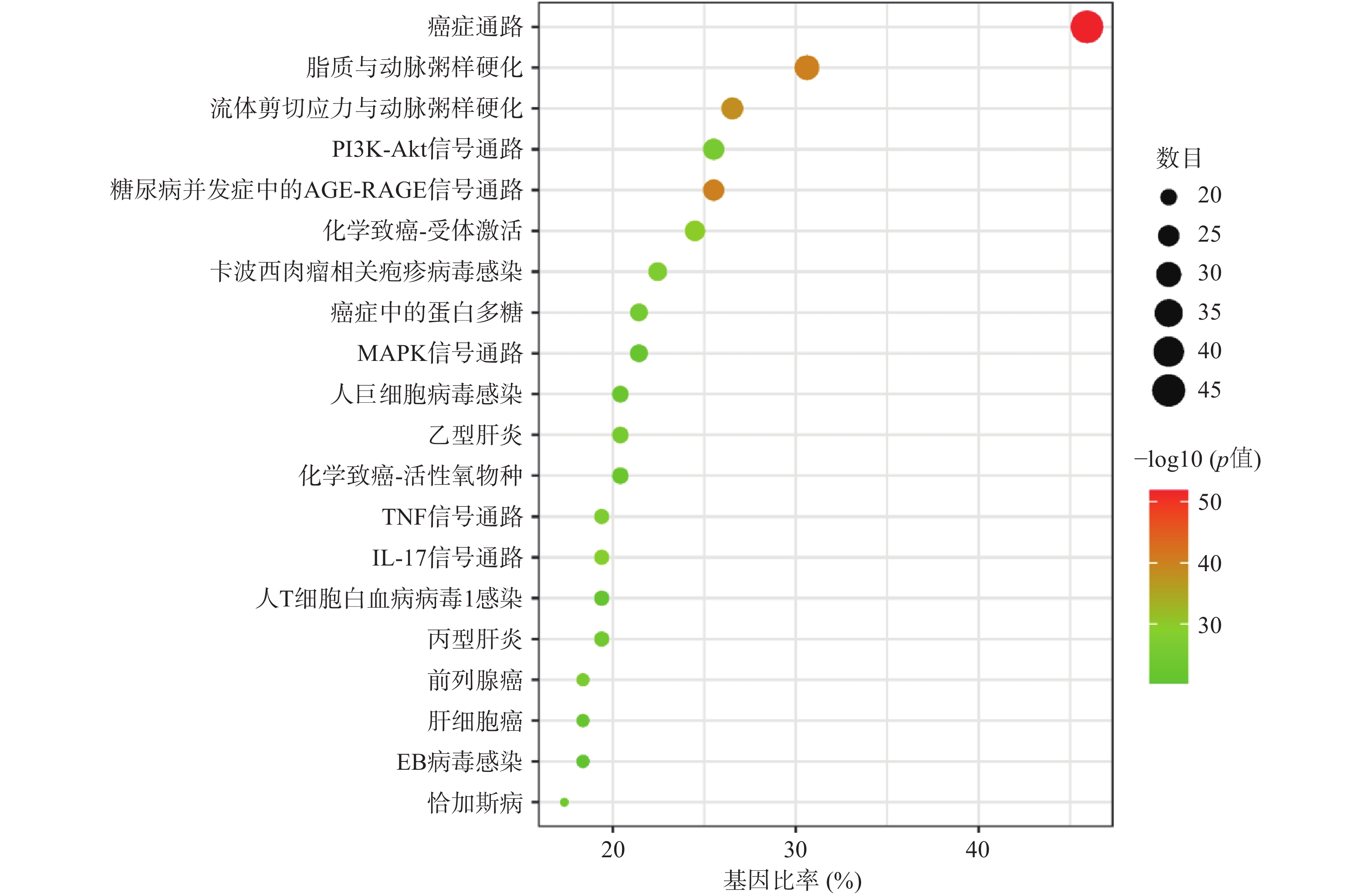

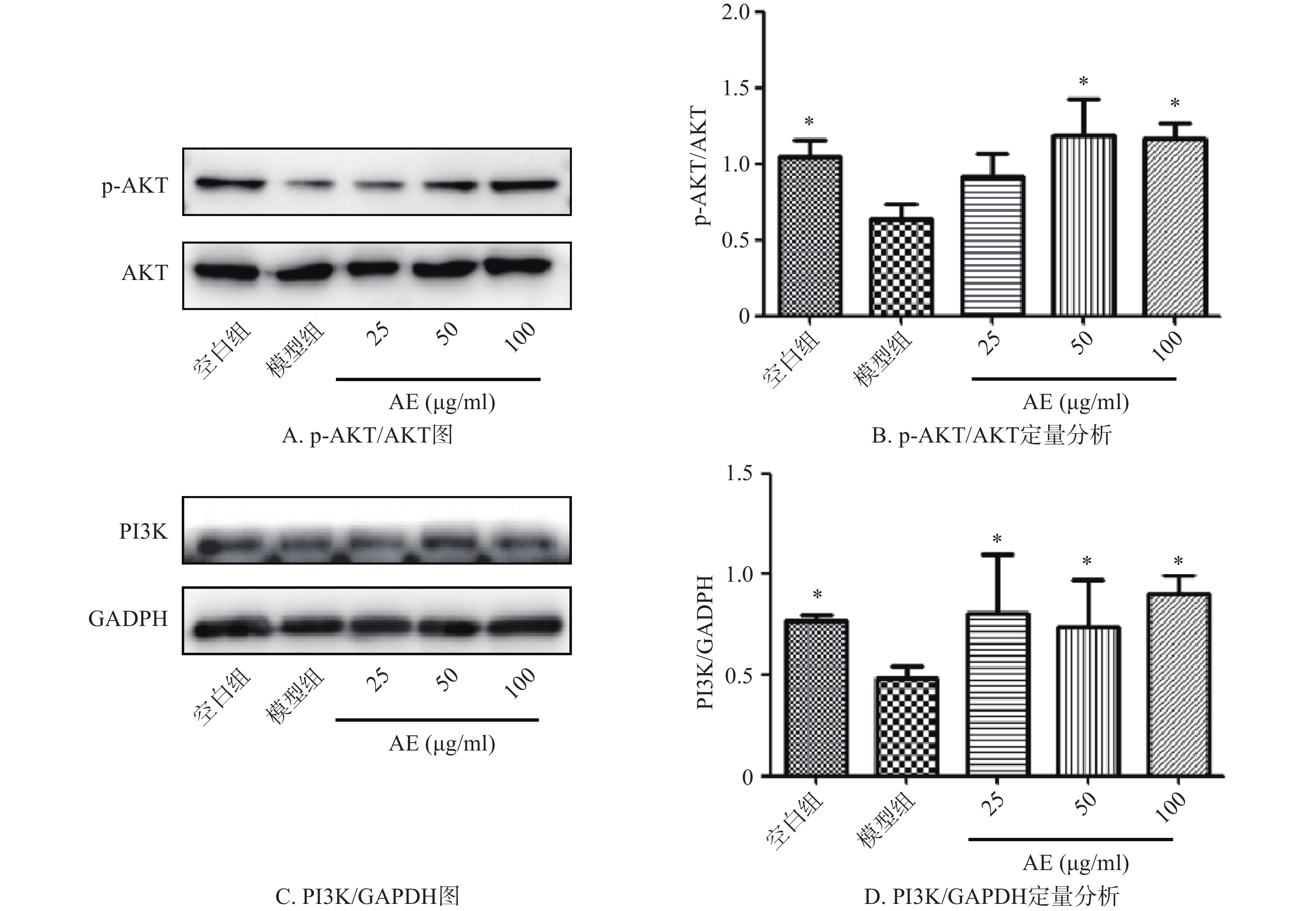
 DownLoad:
DownLoad: